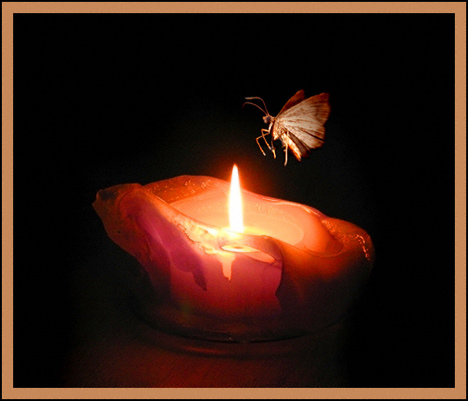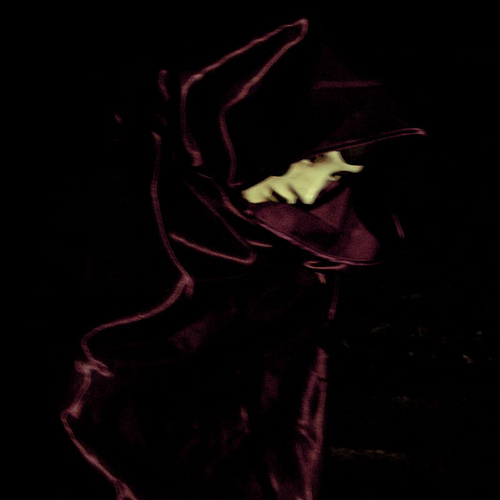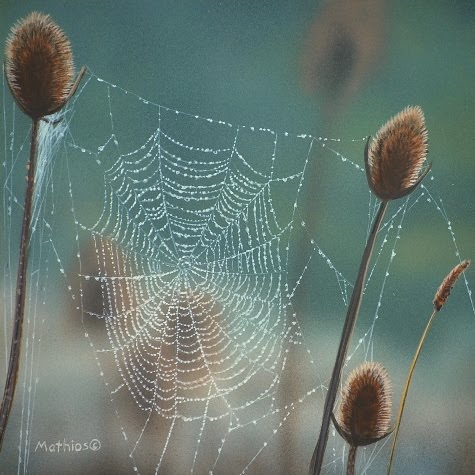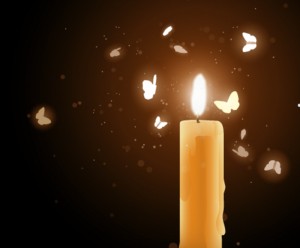Group 2 Essays Presentation
The Death of a Moth by Virginia Woolf
Virginia Woolf (1882–1941) exposed the difficulties of being a woman writer in her essay “A Room of One’s Own.” Her novels experimented with time and narrative, and she is considered a master of the stream-of-consciousness technique. Woolf bat- tled mental illnesses throughout her life, and eventually committed suicide by drowning herself in 1941, a year before this essay was published. As you read, exam- ine the ways she presents images of life and death.
Moths that fly by day are not properly to be called moths; they do not excite that pleasant sense of dark autumn nights and ivy-blossom which the commonest yellow-underwing asleep in the shadow of the curtain never fails to rouse in us. They are hybrid creatures, neither gay like butterflies nor somber like their own species. Nevertheless the present specimen, with his narrow hay-colored wings, fringed with a tassel of the same color, seemed to be content with life. It was a pleasant morning, mid-September, mild, benignant, yet with a keener breath than that of the summer months. The plough was already scoring the field opposite the window, and where the share had been, the earth was pressed flat and gleamed with moisture. Such vigor came rolling in from the fields and the down beyond that it was difficult to keep the eyes strictly turned upon the book. The rooks too were keeping one of their annual festivities; soaring round the tree tops until it looked as if a vast net with thousands of black knots in it had been cast up into the air; which, after a few moments sank slowly down upon the trees until every twig seemed to have a knot at the end of it. Then, suddenly, the net would be thrown into the air again in a wider circle this time, with the utmost clamor and vociferation, as though to be thrown into the air and settle slowly down upon the tree tops were a tremendously exciting experience.
The same energy which inspired the rooks, the ploughmen, the horses, and even, it seemed, the lean bare-backed downs, sent the moth fluttering from side to side of his square of the windowpane. One could not help watching him. One, was, indeed, conscious of a queer feeling of pity for him. The possibilities of plea- sure seemed that morning so enormous and so various that to have only a moth’s part in life, and a day moth’s at that, appeared a hard fate, and his zest in enjoy- ing his meager opportunities to the full, pathetic. He flew vigorously to one cor- ner of his compartment, and, after waiting there a second, flew across to the other. What remained for him but to fly to a third corner and then to a fourth? That was all he could do, in spite of the size of the downs, the width of the sky, the far-off smoke of houses, and the romantic voice, now and then, of a steamer out at sea. What he could do he did. Watching him, it seemed as if a fiber, very thin but pure, of the enormous energy of the world had been thrust into his frail and diminutive body. As often as he crossed the pane, I could fancy that a thread of vital light became visible. He was little or nothing but life.
Yet, because he was so small, and so simple a form of the energy that was rolling in at the open window and driving its way through so many narrow and intricate corridors in my own brain and in those of other human beings, there was something marvelous as well as pathetic about him. It was as if someone had taken a tiny bead of pure life and decking it as lightly as possible with down and feathers, had set it dancing and zigzagging to show us the true nature of life. Thus displayed one could not get over the strangeness of it. One is apt to forget all about life, seeing it humped and bossed and garnished and cumbered so that it has to move with the greatest circumspection and dignity. Again, the thought of all that life might have been had he been born in any other shape caused one to view his simple activities with a kind of pity.
After a time, tired by his dancing apparently, he settled on the window ledge in the sun, and, the queer spectacle being at an end, I forgot about him. Then, looking up, my eye was caught by him. He was trying to resume his dancing, but seemed either so stiff or so awkward that he could only flutter to the bottom of the windowpane; and when he tried to fly across it he failed. Being intent on other matters I watched these futile attempts for a time without thinking, unconsciously waiting for him to resume his flight, as one waits for a machine, that has stopped momentarily, to start again without considering the reason of its failure. After perhaps a seventh attempt he slipped from the wooden ledge and fell,
fluttering his wings, on to his back on the windowsill. The helplessness of his attitude roused me. It flashed upon me that he was in difficulties; he could no longer raise himself; his legs struggled vainly. But, as I stretched out a pencil, meaning to help him to right himself, it came over me that the failure and awkwardness were the approach of death. I laid the pencil down again.
The legs agitated themselves once more. I looked as if for the enemy against which he struggled. I looked out of doors. What had happened there? Presum- ably it was midday, and work in the fields had stopped. Stillness and quiet had re- placed the previous animation. The birds had taken themselves off to feed in the brooks. The horses stood still. Yet the power was there all the same, massed out- side, indifferent, impersonal, not attending to anything in particular. Somehow it was opposed to the little hay-colored moth. It was useless to try to do anything. One could only watch the extraordinary efforts made by those tiny legs against an oncoming doom which could, had it chosen, have submerged an entire city, not merely a city, but masses of human beings; nothing, I knew had any chance against death. Nevertheless after a pause of exhaustion the legs fluttered again. It was superb this last protest, and so frantic that he succeeded at last in righting himself. One’s sympathies, of course, were all on the side of life. Also, when there was nobody to care or to know, this gigantic effort on the part of an insignificant little moth, against a power of such magnitude, to retain what no one else valued or desired to keep, moved one strangely.
Again, somehow, one saw life, a pure bead. I lifted the pencil again, useless though I knew it to be. But even as I did so, the unmistakable tokens of death showed themselves. The body relaxed, and instantly grew stiff. The struggle was over. The insignificant little creature now knew death. As I looked at the dead moth, this minute wayside triumph of so great a force over so mean an antagonist filled me with wonder. Just as life had been strange a few minutes before, so death was now as strange. The moth having righted himself now lay most decently and uncomplainingly composed. O yes, he seemed to say, death is stronger than I am.
QUESTIONS FOR DISCUSSION AND WRITING
1. Conduct a Toulmin analysis of Woolf’s essay. What is her claim? What are her reasons to support that claim? What are the warrants that underlie the claim?
2. What is Woolf’s purpose in writing this essay? To explore? inform? convince? meditate or pray?
3. Why has this essay endured for sixty years? What makes it memorable, lasting?
The Death of a Moth by Annie Dillard
Annie Dillard Moth Essay Longer Version (This one includes the missing paragraph.)
Annie Dillard was born in Pittsburgh in 1945. She attended private school there and, later, Hollins College in Roanoke, Virginia, from which she received a master’s degree in English literature in 1968. She lived in the Roanoke Valley from 1965 to 1975, when she moved to Puget Sound. In 1979, she returned to the East Coast. Dillard has written a book of poems, Tickets for a Prayer Wheel (1974); a prose narrative, Pilgrim at Tinker Creek (1974), which won a Pulitzer Prize; a short prose narrative, Holy the Firm (1977), from which “Transfiguration” (editor’s title) is taken; a book of literary theory, Living by Fiction (1982); and Encounters with Chinese Writers (1984). “Transfiguration” originally appeared under the title “The Death of a Moth.” Other works by Annie Dillard include a memoir, An American Childhood (1987); The Living (1992); her first novel; and Mornings Like This: Found Poems (1995).
The Death of a Moth
I live on northern Puget Sound, in Washington State, alone. I have a gold cat, who sleeps on my legs, named Small. In the morning I joke to her blank face, Do you remember last night? Do you remember? I throw her out before breakfast, so I can eat.
There is a spider, too, in the bathroom, with whom I keep a sort of company. Her little outfit always reminds me of a certain moth I helped to kill. The spider herself is of uncertain lineage, bulbous at the abdomen and drab. Her six-inch mess of a web works, works somehow, works miraculously, to keep her alive and me amazed. The web itself is in a corner behind the toilet, connecting tile wall to tile wall and floor, in a place where there is, I would have thought, scant traffic. Yet under the web are sixteen or so corpses she has tossed to the floor.
The corpses appear to be mostly sow bugs, those little armadillo creatures who live to travel flat out in houses, and die round. There is also a new shred of earwig, three old spider skins crinkled and clenched, and two moth bodies, wingless and huge and empty, moth bodies I drop to my knees to see. Today the earwig shines darkly and gleams, what there is of him: a dorsal curve of thorax and abdomen, and a smooth pair of cerci[1]
by which I knew his name. Next week, if the other bodies are any indication, he will be shrunken and gray, webbed to the floor with dust. The sow bugs beside him are hollow and empty of color, fragile, a breath away from brittle fluff. The spider skins lie on their
sides, translucent and ragged, their legs drying in knots. And the moths, the empty moths, stagger against each other, headless, in a confusion of arching strips of chitin like peeling varnish, like a jumble of buttresses for cathedral domes, like nothing resembling moths,
so that I should hesitate to call them moths, except that I have had some experience with the figure Moth reduce to a nub.
Two summers ago I was camping alone in the Blue Ridge Mountains in Virginia. I had hauled myself and gear up there to read, among other things, James Ramsey Ullman’s The Day on Fire, a novel about Rimbaud that had made me want to be a writer when I was sixteen;[2] I was hoping it would do it again. So I read, lost, every day sitting under a tree by my tent, while warblers swung in the leaves overhead and bristle worms trailed their inches over the twiggy dirt at my feet; and I read every night by candlelight, while barred owls called in the forest and pale moths massed round my head in the clearing, where my light made a ring.
Moths kept flying into the candle. They would hiss and recoil, lost upside down in the shadows among my cooking pans. Or they would singe their wings and fall, and their hot wings, as if melted, would stick to the first thing they touched—a pan, a lid, a spoon—so that the snagged moths could flutter only in tiny arcs, unable to struggle free. These I could release by a quick flip with a stick; in the morning I would find my cooking stuff gilded with torn flecks of moth wings, triangles of shiny dust here and there on the aluminum. So I read, and boiled water, and replenished candles, and read on.
One night a moth flew into the candle, was caught, burnt dry, and held. I must have been staring at the candle, or maybe I looked up when a shadow crossed my page; at any rate, I saw it all. A golden female moth, a biggish one with a two-inch wingspan, flapped into the fire, dropped her abdomen into the wet wax, stuck, flamed, frazzled and fried in a second. Her moving wings ignited like tissue paper, enlarging the circle of light in the clearing and creating out of the darkness the sudden blue sleeves of my sweater, the green leaves of jewel weed by my side, the ragged red trunk of a pine. At once the light contracted again and the moth’s wings vanished in a fine, foul smoke. At the same time her six legs crawled, curled, blackened, and ceased, disappearing utterly. And her head jerked in spasms, making a spattering noise; her antennae crisped and burned away and her heaving mouth parts crackled like pistol fire. When it was all over, her head was, so far as I could remember, gone, gone the long way of her wings and legs. Had she been new, or old? Had she mated and laid her eggs, had she done her work? All that was left was the glowing horn shell of her abdomen and thorax—a fraying, partially collapsed gold tube jammed upright in the candle’s round pool.
And then this moth-essence, this spectacular skeleton, began to act as a wick. She kept burning. The wax rose in the moth’s body from her soaking abdomen to her thorax to the jagged hole where her head should be, and widened into a flame, a saffron-yellow flame that robed her to the ground like any immolating monk. That candle had two wicks, two flames of identical height, side by side. The moth’s head was on fire. She burned for two hours, or until I blew her out.
She burned for two hours without changing, without bending or leaning—only glowing within, like a building glimpsed through silhouetted walls, like a hollow saint, like a flame-faced virgin gone to God, while I read by her light, kindled, while Rimbaud in Paris burnt out his brains in a thousand poems, while night pooled wetly at my feet.
And that is why I believe those hollow crisps on the bathroom floor are moths. I think I know moths, and fragments of moths, and chips and tatters of utterly empty moths, in any state. How many of you, I asked the people in my class, which of you want to give your lives and be writers? I was trembling from coffee, or cigarettes, or the closeness of faces all around me. (Is this what we live for, I thought; is this the only final beauty: the color of any skin in any light, and living, human eyes?) All hands rose to the question. (You, Nick? Will you? Margaret? Randy? Why do I want them to mean it?) And then I tried to tell them what the choice must mean: you can’t be anything else. You must go at your life with a broadax . . . They had no idea what I was saying. (I have two hands, don’t I? And all this energy, for as long as I can remember. I can do it in the evenings, after skiing, or on the way home from the bank, or after the children are asleep . . . ) They thought I was raving again. It’s just as well.
I have three candles here on my table which I disentangle from the plants and light when visitors come. Small usually avoids them, although once she came too close and her tail caught on fire; I rubbed it out before she noticed. The flames move light over everyone’s skin, draw light to the surface of the faces of my friends. When the people leave I never blow the candles out, and after I’m asleep, they flame and burn.
From The Norton Sampler: Short Essays for Composition, 5th edition, Thomas Cooley, ed.
[1] Plural of cercus, posterior “feeler” of an insect.
[2] French poet Arthur Rimbaud (1854-1891) himself began writing at age sixteen and produced his major work before he was twenty. Ullman’s novel was published in 1958.




